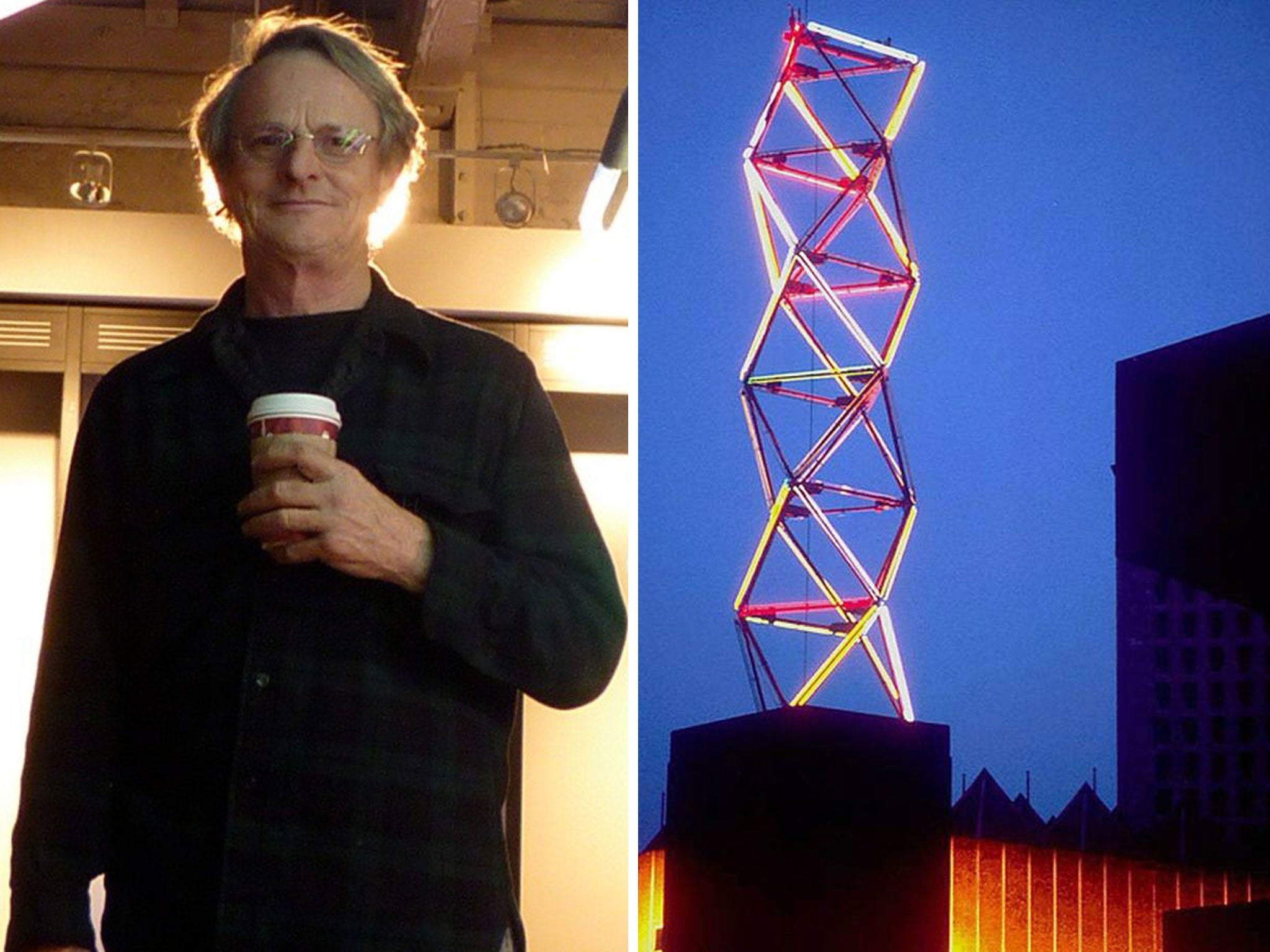Incandescent: artist Philip Vaughan’s fury after Hayward Gallery switches off his Neon Tower light sculpture
Gallery criticised over decision not to restore Neon Tower to London skyline

Your support helps us to tell the story
From reproductive rights to climate change to Big Tech, The Independent is on the ground when the story is developing. Whether it's investigating the financials of Elon Musk's pro-Trump PAC or producing our latest documentary, 'The A Word', which shines a light on the American women fighting for reproductive rights, we know how important it is to parse out the facts from the messaging.
At such a critical moment in US history, we need reporters on the ground. Your donation allows us to keep sending journalists to speak to both sides of the story.
The Independent is trusted by Americans across the entire political spectrum. And unlike many other quality news outlets, we choose not to lock Americans out of our reporting and analysis with paywalls. We believe quality journalism should be available to everyone, paid for by those who can afford it.
Your support makes all the difference.The artist behind one of London’s landmark sculptures has launched a blistering attack on the director of the Hayward Gallery – accusing him of allowing the work to be destroyed.
Philip Vaughan’s Neon Tower, a 45ft (14m) light sculpture that changes colour according to the strength and direction of the wind, was a prominent fixture on the capital’s skyline from 1972 until 2008, when it was taken down from the roof of the South Bank gallery for renovation.
But now Vaughan has accused the gallery’s executives of going back on plans to restore and return the work to its previous perch – and singled out the American director Ralph Rugoff for particular criticism.
Despite the tower being the first light-based public sculpture in London, it was overlooked for a place in the Hayward’s current blockbuster “Light Show” exhibition, which showcases contemporary light sculptures.
“The role of a publicly funded gallery like the Hayward is both to exhibit works for the benefit of today’s public and to preserve artworks for the benefit of future generations,” said Vaughan, who was commissioned to make the sculpture by the Arts Council in 1970.
“This work was deemed of sufficient interest and value that previous administrations of the Hayward Gallery looked after it very well. The recent failure to maintain the work coincided with the arrival of the present director,” he told The Independent.
“I can understand that a particular individual might not like a piece of work, but that work is paid for by the state and clearly has considerable popular support.”
A statement from the Hayward Gallery, which is due to be developed as part of a £120m regeneration scheme, said: “As it is only two weeks since we announced the proposals to transform Festival Wing, which includes the Queen Elizabeth Hall, Purcell Room and Hayward Gallery, the artist may not have realised that the site previously occupied by the Neon Tower will not be available for reinstallation. Launched earlier this month, the proposals, which include a new central foyer and new glass pavilion in front of the gallery, preclude the Neon Tower from being reinstalled where once situated.”
Earlier, the gallery said: “[The work] was commissioned in 1970 as a temporary installation. Deterioration accrued over the following decades and the lighting elements stopped functioning some years ago. Despite remedial work, we were unable to return the work to its former glory and it is now in storage in our archive. A comprehensive feasibility study in 2010 assessed significant costs were required to restore and reinstate the work, and Southbank Centre took the decision not to proceed with fundraising at this point.”
But Vaughan rejects the claim that the sculpture was always intended to be temporary. “In the 42 years that I have been involved in this project, this is the first time that I have ever heard that the tower was supposed to be temporary,” he said.
“This sculpture was not referred to as temporary when it was originally commissioned... The term appears to be a fig leaf to justify the removal of the tower and the current administration of the Hayward Gallery’s reneging on their commitment to restore it.”
The campaign to restore the Neon Tower has the support of artists including Antony Gormley and Ron Arad as well as London Mayor Boris Johnson.
Since its removal, a prominent supporter of the tower, Lady Suzanne Warner, has been seeking private funding to restore it. She said: “Space could be made for the tower within the new plans if the will was there. Judging from the response to the current ‘Light Show’, the cultural benefit to Londoners and visitors of having the tower lit again is likely to be considerable.”
Join our commenting forum
Join thought-provoking conversations, follow other Independent readers and see their replies
Comments